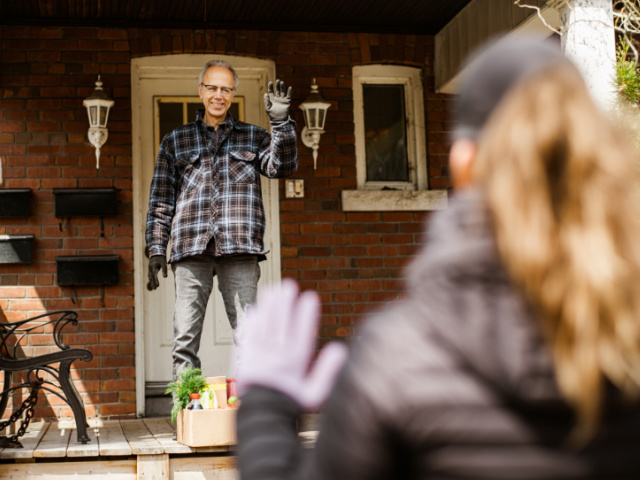Adults in the United States who routinely greet multiple neighbors have higher well-being than those who greet fewer or no neighbors, a recent Gallup survey found.
“Americans’ wellbeing score increases steadily by the number of neighbors greeted, from 51.5 among those saying hello to zero neighbors to 64.1 for those greeting six neighbors. No meaningful increase in wellbeing is seen for additional neighbors greeted beyond six,” the survey found.
The results were collected as part of the Gallup National Health and Well-Being Index. The index measures five essential elements of well-being, including, career, social, financial, physical, and community.
Overall, Americans report greeting five neighbors on a regular basis, and 27 percent report saying hello to six or more. The results vary “substantially” by age, with young adults greeting an average of 2.9 neighbors, and people 65 and older greeting 6.5, the survey found. Roughly one in seven people under 30 (14 percent) says hello to six or more neighbors, compared to 41 percent of people 65 and older.
“Having children under 18 in the household marginally improves the chances of greeting neighbors, as does having an annual household income of $120,000 or more,” according to the survey report.
Gallup found that the number of neighbors someone greets correlates to better well-being across all five categories. Social, community, career, and physical well-being peak at greeting six neighbors, while financial peaks at 11 to 15 interactions with neighbors.
Gallup analyzed the multifaceted relationship friendliness to neighbors has to other aspects of life. For one, neighborly interactions themselves “foster stronger social community well-being in people’s lives.” At the same time, people are more likely to greet their neighbors if they have high physical well-being (energy to get things done), high financial well-being, and they have high career well-being, and enjoy what they do for work each day. Gallup further deduced that people with high financial well-being likely live in safer neighborhoods, making them more like to “openly” greet neighbors.
Gallup further found that U.S. adults are more likely to categorize themselves as “thriving” compared to “struggling” or “suffering” when they say hello to more neighbors.
“The chance of being categorized as ‘thriving’ in Gallup’s overall life ratings increases from just 38.1 percent among those who regularly say hello to zero people in their neighborhood to 60.5 percent among those who say hello to five. At this point, however, no further gains are found among those who greet greater numbers of people,” according to the survey.
Political scientist Robert Putnam once noted to NPR that “social capital,” which he called a “highfalutin term for … a community,” are connections that “have powerful effects on … just about everything.”
“The growth rate in your neighborhood is higher. The quality of government is higher. Education turns out to be powerfully, positively affected. The more connected parents and communities are to the schools, the higher the performance of kids,” Putnam said.
He also said the “best predictor” of a low crime rate in a neighborhood is “how many neighbors know your first name.”
“Over the last 50 years since the mid-’60s, roughly – late ’60s, the level of social capital in America has been steadily declining,” he added.
Putnam notably differentiated between “bonding social capital” and “bridging social capital.” Bonding social capital links an individual to people like them, while bridging social capital is bonding between people who are not like each other.
“If you get sick, the people who bring you chicken soup are likely to represent your bonding social capital. So we need bonding social capital,” he described. “But bridging social capital, this is the, really, heart of the point I want to make. Bridging social capital – that’s my jargon for saying your connections to people unlike you — is way down. And that is encouraging polarization.”
Gallup’s findings are from a poll conducted between May 30 and June 6 with 4,556 U.S. adults.
